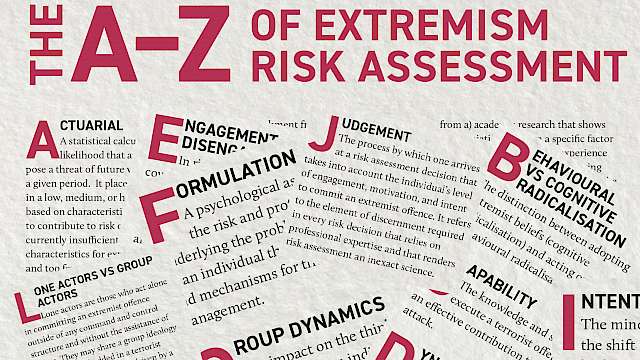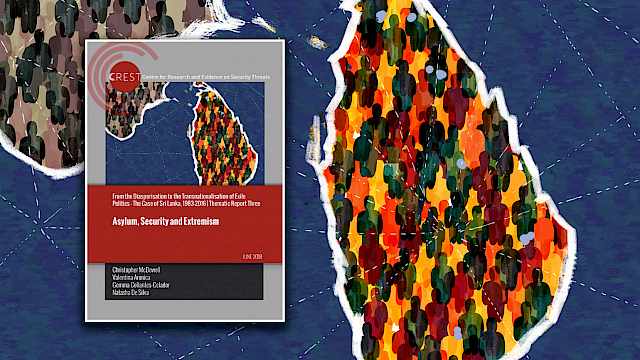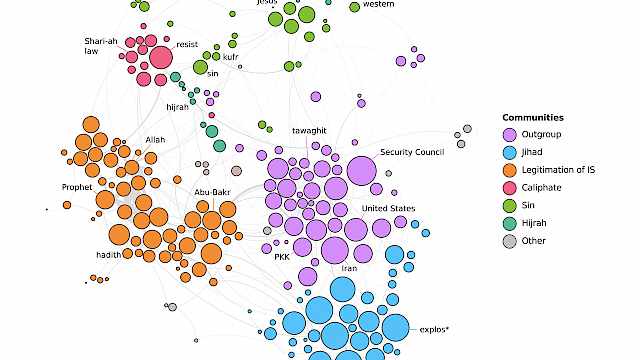Radicalisation
Academic Publications
Staying Engaged in Terrorism: Narrative Accounts of Sustaining Participation in Violent Extremism
Research exploring radicalization pathways and how and why people become involved in terrorism has expanded since the 9/11 attacks. Likewise, over the last decade research exploring de-radicalization and desistence from terrorism has grown and expanded in an attempt to promote exit from extremist or terror groups.
However, research studies on how individuals sustain engagement in terrorism and their involvement with extremist organizations, often in the face of great adversity, are absent from the body of research.
To address this scarcity of research this study analyzed accounts of engagement in violent extremism produced by Northern Irish loyalist and republican paramilitaries in order to explore how their paramilitary lifestyle, perpetration of acts of political violence and the pressure from countering threats posed by rival groups, and the State security forces impacted on them.
The analysis utilized a hybrid of thematic analysis and interpretative phenomenological analysis (IPA). The themes raised through the analysis reflected the psychological, social and economic hardship associated with this lifestyle. The narrative accounts also illustrated psychological changes associated to engagement in violence and from insulation within tightly knit extremist groups.
As most of the participants faced incarceration during their paramilitary careers, themes also reflected on the impact imprisonment had on them. The themes explored factors that sustained their involvement, including the role of identity development and identity fusion in sustaining their extremism, the impact of insulated group membership, feelings of efficacy, dehumanization processes, community support, and beliefs in the utility of violence.
(From the journal abstract)
Neil Ferguson & James W. McAuley, 2020. Staying engaged in terrorism: narrative accounts of sustaining participation in violent extremism. Frontiers in psychology.
https://doi.org/10.3389/fpsyg.2020.01338
ISIS Propaganda: A Full-Spectrum Extremist Message
This book offers a comprehensive overview and analysis of the Islamic State's use of propaganda.
Combining a range of different theoretical perspectives from across the social sciences, and using rigorous methods, the authors trace the origins of the Islamic State's message, laying bare the strategic logic guiding its evolution, examining each of its multi-media components, and showing how these elements work together to radicalize audiences' worldviews.
This volume highlights the challenges that this sort of "full-spectrum propaganda" raises for counter terrorism forces. It is not only a one-stop resource for any analyst of IS and Salafi-jihadism, but also a rich contribution to the study of text and visual propaganda, radicalization and political violence, and international security.
(From the book abstract)
Stephane J. Baele, Katharine A. Boyd, and Travis G. Coan. 2020. ‘ISIS Propaganda: A Full-Spectrum Extremist Message’. Oxford, New York: Oxford University Press. ISBN: 9780190932459
Radicalization, the Internet and Cybersecurity: Opportunities and Challenges for HCI
The idea that the internet may enable an individual to become radicalized has been of increasing concern over the last two decades. Indeed, the internet provides individuals with an opportunity to access vast amounts of information and to connect to new people and new groups.
Together, these prospects may create a compelling argument that radicalization via the internet is plausible. So, is this really the case? Can viewing ‘radicalizing’ material and interacting with others online actually cause someone to subsequently commit violent and/or extremist acts? In this article, we discuss the potential role of the internet in radicalization and relate to how cybersecurity and certain HCI ‘affordances’ may support it.
We focus on how the design of systems provides opportunities for extremist messages to spread and gain credence, and how an application of HCI and user-centered understanding of online behavior and cybersecurity might be used to counter extremist messages.
By drawing upon existing research that may be used to further understand and address internet radicalization, we discuss some future research directions and associated challenges.
(From the journal abstract)
Hinds, Joanne, and Adam Joinson. 2017. 'Radicalization, the Internet and Cybersecurity: Opportunities and Challenges for HCI'. In Human Aspects of Information Security, Privacy and Trust, 481–93. Lecture Notes in Computer Science. Springer, Cham. https://researchportal.bath.ac.uk/en/publications/radicalization-the-internet-and-cybersecurity-opportunities-and-c















































